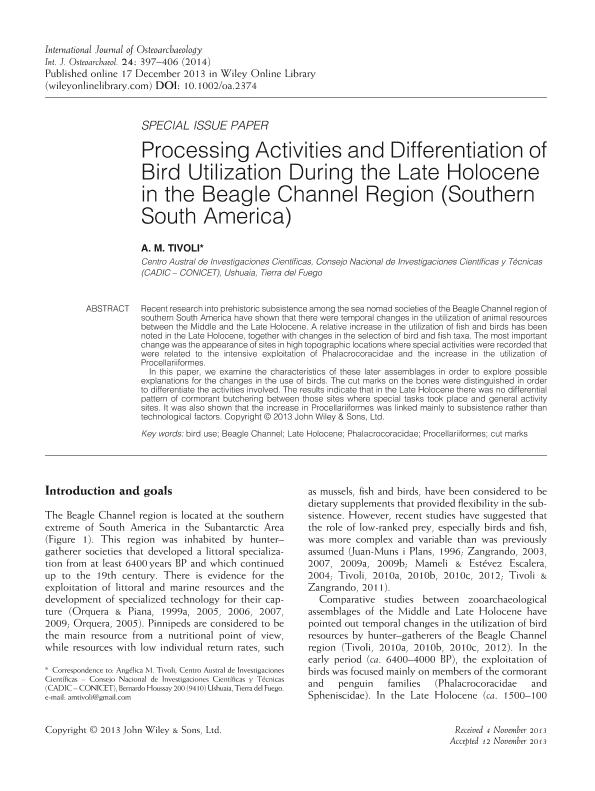Artículo
Processing Activities and Differentiation of Bird Utilization During the Late Holocene in the Beagle Channel Region (Southern South America)
Fecha de publicación:
10/2014
Editorial:
Wiley
Revista:
International Journal of Osteoarchaeology
ISSN:
1099-1212
Idioma:
Inglés
Tipo de recurso:
Artículo publicado
Clasificación temática:
Resumen
Recent research into prehistoric subsistence among the sea nomad societies of the Beagle Channel region of southern South America have shown that there were temporal changes in the utilization of animal resources between the Middle and the Late Holocene. A relative increase in the utilization of fish and birds has been noted in the Late Holocene, together with changes in the selection of bird and fish taxa. The most important change was the appearance of sites in high topographic locations where special activities were recorded that were related to the intensive exploitation of Phalacrocoracidae and the increase in the utilization of Procellariiformes. In this paper, we examine the characteristics of these later assemblages in order to explore possible explanations for the changes in the use of birds. The cut marks on the bones were distinguished in order to differentiate the activities involved. The results indicate that in the Late Holocene there was no differential pattern of cormorant butchering between those sites where special tasks took place and general activity sites. It was also shown that the increase in Procellariiformes was linked mainly to subsistence rather than technological factors.
Archivos asociados
Licencia
Identificadores
Colecciones
Articulos(CADIC)
Articulos de CENTRO AUSTRAL DE INVESTIGACIONES CIENTIFICAS
Articulos de CENTRO AUSTRAL DE INVESTIGACIONES CIENTIFICAS
Citación
Tivoli, Angelica Montserrat; Processing Activities and Differentiation of Bird Utilization During the Late Holocene in the Beagle Channel Region (Southern South America); Wiley; International Journal of Osteoarchaeology; 24; 3; 10-2014; 397-406
Compartir
Altmétricas




